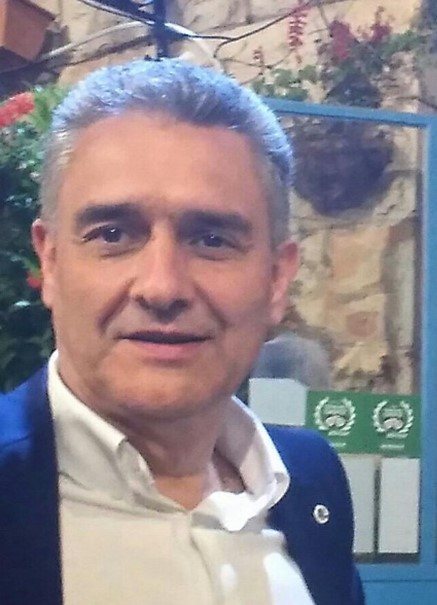By Gianluca Veneziani and Maurizio Servili
The virgin olive oil (VOO) sector have had a great increase and improvement in the last thirty years with a particular attention to the olive oil mechanical extraction process. The regulation and control of the main processing parameters, such as temperature, oxygen availability and extraction time, was the topic of many manuscripts produced by the effort of the main international research groups involved in the enhancement of VOO quality1,2. New technologies, such as heat exchangers, ultrasounds, megasounds, high vacuum, mirowaves, pulsed electric fields and so on, were tested and their impact was evaluated with the common aim of improving the oil extractability and efficiency of the industrial plants, and the VOO quality parameters strictly linked to the sensory and healthy properties3-5. These properties, mainly due to the quantitative and qualitative composition of phenolic and volatile compounds, were object of many trials to optimize the processing technology taking into account the other variables involved in the production of a VOO characterized by high quality standards. One of the most significant variables, more than agronomic practices, harvesting time, growing area and water availability, is represented by the olive cultivars. The genetic origin of the fruits showed a high influence in the production of the main C5 and C6 saturated and unsaturated aldehydes, alcohols and esters generated during the lipoxygenase (LOX) pathway. The different mix of these compounds produces the characteristic flavor of a VOO due to different levels of green, herbaceous, fruity, sweet, floral, tomato, artichoke, almond, etc…sensory notes. The different enzymes, belonging to LOX pathway, are characterized by very different enzymatic activity levels from a cultivar to another, showing a differentiated impact of the new technologies and processing parameters on the neoformation of volatile molecules as a function of the genetic origin of the olive drupes6-8. On the contrary, the hydrophilic fraction of phenolic compounds, mainly represented by secoiridoid derivatives[3,4-DHPEA-EDA (oleacein), p-HPEA-EDA (oleocanthal), 3,4-DHPEAEA (isomer of the oleuropein aglycon), p-HPEA-EA (ligstroside aglycon), 3,4-DHPEA (hydroxy-tyrosol), p-HPEA (tyrosol)], seems to have a more stable behavior induced by the introduction of new technologies and regulation of processing characteristics during the olive oil mechanical extraction systems. Even if, the quantitative and qualitative variability of phenolic concentration is influenced by the cultivar, the hydrophilic phenols, characterized by high bioactive properties, generally showed the same evolution trends independently by the genetic origin of the olive processed. The article by Veneziani et al. (2021)“Application of low temperature during the malaxation phase of virgin olive oil mechanical extraction processes of three different Italian cultivars” is one of the recent studies on the optimization of technological process in relation to the olive cultivars. The manuscript, concerning the impact of low temperature (18 C) during the crushing and malaxation phases, increased the knowledge on the regulation of temperature and its effect on phenolic and volatile composition of VOO. The study was carried out on Canino (Lazio region), Moraiolo (Umbria region) and Peranzana (Apulia region) cultivars mainly to evaluate the influence of the prolonged use of low temperature during the extraction process on the main endogenous enzymes, characterized by different activity load, that regulate both the neoformation of volatile molecules and the oxidation phenomenon of the hydrophilic phenols6-10. The control trials and the experimental tests were carried out changing the temperature during the mechanical extraction process using a heat exchanger after the crushing phase and the same chiller system as the heat exchanger to cool malaxer as described in Figure 1.

Trials showed two significant results, the first was “…the positive role of rapid thermal conditioning on the olive paste of different cultivars after the crushing phase, which was induced by the reduction of temperature using a heat exchanger… related to the improvement of the hydrophilic phenol content of VOOs in all the cultivars processed…”. Whereas the second one concerned the use of low temperature also during the malaxation phase showing that “…phenolic compound solubilization into the oily phase was negatively influenced by the use of low temperature during the entire malaxation period for all the cultivars, whereas the volatile fraction showed an improvement in VOO flavor mainly due to the oil extracted from Canino…”.
For detailed information please refer to the original article:
Veneziani, G.; Nucciarelli, D.; Taticchi, A.; Esposto, S.; Selvaggini, R.; Tomasone, R.; Pagano, M.; Servili, M. Application of Low Temperature during the Malaxation Phase of Virgin Olive Oil Mechanical Extraction Processes of Three Different Italian Cultivars. Foods 2021, 10, 1578. https://doi.org/10.3390/foods10071578

Gianluca Veneziani 
Maurizio Servili 
Gianluca Veneziani, PhD
Gianluca Veneziani graduated in Agricultural Science and Technology in 2003 at the University of Perugia (Italy), received his PhD degree in Food Biotechnology from the University of Bologna in 2009. He continued his scientific studies and research collaboration for other ten years at the Department of Agricultural, Food and Environmental Sciences (DSA3), University of Perugia. From 2019, he is researcher (RTD-b) at the Research Unit of Food Science and Technology of the same department (DSA3). The main research topics concern:
- Olive oil mechanical extraction processes;
- Study of possible modification induced by processing, packaging and storage on olive oil quality mainly related to phenolic and volatile compounds;
- Purification, separation and concentration processes using membrane filtration systems;
- Recovery and valorization of phenolic compounds and other bioactive molecules from food by-products (virgin olive oil, table olives, wine, coffee, fruits, ect…);
- Study of biological activities of phenolic compounds and their application as health-promoting molecules, antioxidant and antimicrobial in different agri-food sectors (food processing, packaging and storage, animal feeding, functional foods, nutraceutics, cosmetic, ect…).
Scopus scientific production: documents 42; h-index 19; total citations 998.
Maurizio Servili, Prof.
Maurizio Servili graduated in Agricultural Science in 1986 at the University of Perugia, Italy.
He acquired domestic and international experience as doctoral fellow at the Istituto di industrie Agrarie (1986-1990) University of Perugia, Italy and The Food Science Laboratories, Dept. Bioscience and Biotechnology of Strathclyde University, Glasgow, Scotland. Prof. Servili started his academic career as Assistant Professor at the Faculty of Agriculture, University of Perugia (1990-1998). He was for sixteen years Associate Professor (University of Molise and University of Perugia). Now he is Full Professor at the Department of Agricultural, Food and Environmental Sciences, University of Perugia. The main research topics concern:
- Study of phenolic and volatile compounds of several foods (table olive, virgin olive oil, wine and tomato derivatives) and their variability and role during the ripening, the processing and the shelf-life
- Processing of virgin olive oil and wine:
- Characterization and valorisation of by-products;
- Development of instrumental methods of the food quality analysis;
- Study of possible modification induced by processing, packaging and storage on olive oil major and minor components;
- Development of prediction models for the quality deterioration of olive oil;
- Study of health-promoting effects of olive oil phenolic compounds.
Scopus scientific production: documents 181; h-index 47; total citations 9033.
References
- Marx, Í.M.; Rodrigues, N.; Veloso, A.C.; Casal, S.; Pereira, J.A.; Peres, A.M. Effect of malaxation temperature on the physicochemical and sensory quality of cv. Cobrançosa olive oil and its evaluation using an electronic tongue. LWT 2021, 137, 110426.
- Selvaggini, R.; Esposto, S.; Taticchi, A.; Urbani, S.; Veneziani, G.; Di Maio, I.; Sordini, B.; Servili, M. Optimization of the temperature and oxygen concentration conditions in the malaxation during the oil mechanical extraction process of four Italian olive cultivars. J. Agric. Food Chem. 2014, 62, 3813–3822.
- Veneziani, G.; Esposto, S.; Taticchi, A.; Urbani, S.; Selvaggini, R.; Di Maio, I.; Sordini, B.; Servili, M. Cooling treatment of olive paste during the oil processing: Impact on the yield and extra virgin olive oil quality. Food Chem. 2017, 221, 107–113.
- Taticchi, A.; Esposto, S.; Veneziani, G.; Minnocci, A.; Urbani, S.; Selvaggini, R.; Sordini, B.; Daidone, L.; Sebastiani, L.; Servili, M. High vacuum-assisted extraction affects virgin olive oil quality: Impact on phenolic and volatile compounds. Food Chem. 2021, 342, 128369.
- Kalogianni, E.P.; Georgiou, D.; Hasanov, J.H. Olive oil processing: Current knowledge, literature gaps, and future perspectives. J. Am. Oil Chem. Soc. 2019, 96, 481–507.
- Luaces, P.; Sanz, C.; Pérez, A.G. Thermal Stability of Lipoxygenase and Hydroperoxide Lyase from Olive Fruit and Repercussion on Olive Oil Aroma Biosynthesis. J. Agric. Food Chem. 2007, 55, 6309–6313.
- Sánchez-Ortiz, A.; Romero-Segura, C.; Sanz, C.; Pérez, A.G. Synthesis of Volatile Compounds of Virgin Olive Oil Is Limited by the Lipoxygenase Activity Load during the Oil Extraction Process. J. Agric. Food Chem. 2012, 60, 812–822.
- Padilla, M.N.; Martínez-Rivas, J.M.; Pérez, A.G.; Sanz, C. Thermal Inactivation Kinetics of Recombinant Proteins of the Lipoxygenase Pathway Related to the Synthesis of Virgin Olive Oil Volatile Compounds. J. Agric. Food Chem. 2012, 60, 6477–6482.
- Clodoveo, M.L.; Hbaieb, R.H.; Kotti, F.; Mugnozza, G.S.; Gargouri, M. Mechanical Strategies to Increase Nutritional and Sensory Quality of Virgin Olive Oil by Modulating the Endogenous Enzyme Activities. Compr. Rev. Food Sci. Food Saf. 2014, 13, 135–154.
- Taticchi, A.; Esposto, S.; Veneziani, G.; Urbani, S.; Selvaggini, R.; Servili, M. The influence of the malaxation temperature on the activity of polyphenoloxidase and peroxidase and on the phenolic composition of virgin olive oil. Food Chem. 2013, 136, 975–983.

